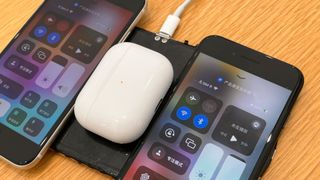AirPower prototype shows why Apple was right to abandon its wireless charger
Remember AirPower? Apple's advanced charging mat concept never materialized and the company was forced to abandon it due to a plethora of overheating issues. Well, now an unreleased prototype from 2017 has hit the internet – and it shows just how bad things were for the device.
Apple leaker Kosutami shared one series of images and videos of an AirPower prototype on X (formerly Twitter). According to the poster, the version they tested got so hot that it broke started melting their AirPods Pro casecausing the plastic covering to begin to blister in some areas.
That backs up previous leaks that have followed AirPower over the years. The idea of the charger was that you could place any Apple mobile device (including iPhones, Apple Watches, and AirPods cases) anywhere on the charging mat and they would still charge properly. That's different from most wireless chargers, which require you to place your devices in specific locations to ensure they charge properly.
The problem with AirPower was that Apple could never control the excess heat the product generated while charging devices. Ultimately, Apple threw in the towel and dropped AirPower in 2019. The fact that the company kept trying for years after Kosutami's prototype was created suggests that Apple was confident it could overcome the heating problems, despite its very obvious dangers. Ultimately that turned out not to be the case.
Buggy and potentially dangerous
Kosutami included a few other interesting tidbits in posts on X (formerly Twitter). For starters, they've included a photo showing the AirPower pad charge an Android phonesomething that almost certainly wouldn't have worked in the final product after Apple finalized the AirPower software.
In addition, Kosutami was apparently able to charge an Apple Watch on the AirPower mat. Yet they noted in a reply to another X user that the Watch was charged for less than a minute and still overheated and crashed.
The prototype tested by Kosutami has 15 charging coils – down from a revision from later in 2017, which came with 21 coils. Presumably the lower coil count left gaps in the pad's charging coverage, meaning it would be easier for devices to be placed in suboptimal locations (such as only half above a coil). This in turn appears to be the cause of the serious overheating problems, Kosutami said explained to MacRumors.
Getting a look at an unreleased Apple product like this is extremely rare, especially since it shows the actual damage that early AirPower prototypes could do. Based on this evidence, it appears that Apple was right to abandon the project, regardless of its lofty goals.

